El polvo de acero de baja aleación es un material versátil y esencial en diversas industrias, desde la automovilística hasta la aeroespacial. Estos polvos se diseñan con composiciones químicas y propiedades específicas para satisfacer los exigentes requisitos de la ingeniería moderna. Tanto si es un ingeniero que busca optimizar el rendimiento de su producto como si es un fabricante que busca el material adecuado o simplemente siente curiosidad por el tema, esta guía le adentrará en el mundo de los polvos de acero de baja aleación.
Visión general de Aceros de baja aleación Polvo
El polvo de los aceros de baja aleación se produce mediante diversos métodos, como la atomización, la reducción y la electrólisis, que dan como resultado un polvo fino y uniforme utilizado en diversas aplicaciones. A diferencia de los aceros de alta aleación, los aceros de baja aleación contienen un porcentaje menor de elementos de aleación, normalmente inferior al 8%. Esto permite un equilibrio entre resistencia, dureza y soldabilidad, lo que los hace ideales para aplicaciones que requieren propiedades mecánicas específicas.
¿Qué hace especial a la pólvora de aceros de baja aleación?
Los polvos de acero de baja aleación se adaptan para conseguir propiedades específicas, como una mayor resistencia, tenacidad y resistencia al desgaste. La composición precisa de estos polvos permite a los fabricantes crear componentes duraderos y ligeros sin comprometer el rendimiento.
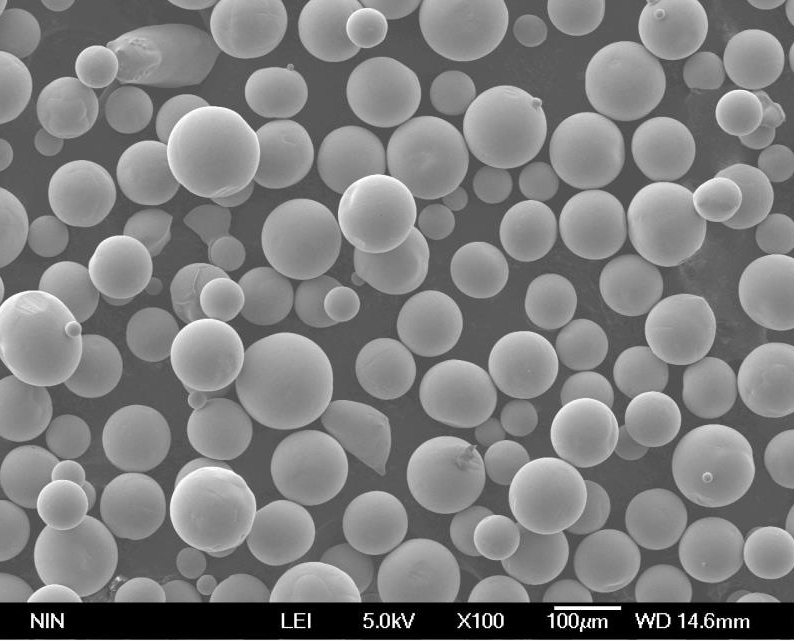
Tipos de aceros de baja aleación Polvo
Cuando se trata de polvo de aceros de baja aleación, la diversidad es inmensa. A continuación, exploraremos algunos de los modelos más utilizados, desglosando su composición, propiedades y aplicaciones.
| Modelo | Composición | Propiedades clave | Aplicaciones |
|---|---|---|---|
| AISI 4130 | Cromo, molibdeno | Alta resistencia, tenacidad, buena soldabilidad | Piezas de aviones, automoción, petróleo y gas |
| AISI 4340 | Níquel, cromo, molibdeno | Excelente resistencia a la fatiga, alta tenacidad | Engranajes, cigüeñales, maquinaria sometida a grandes esfuerzos |
| AISI 6150 | Cromo, Vanadio | Buena resistencia al impacto y al desgaste | Muelles, ejes, cuchillas |
| AISI 8620 | Níquel, cromo, molibdeno | Cementación, buena tenacidad | Engranajes, cigüeñales, bujes |
| AISI 5140 | Cromo | Alta resistencia a la tracción, tenacidad | Pernos, tuercas, ejes |
| AISI 5120 | Cromo | Alta resistencia al desgaste, dureza | Engranajes, levas, piezas hidráulicas |
| AISI 50B44 | Boro | Mayor templabilidad y resistencia | Componentes estructurales, elementos de fijación |
| AISI 5145 | Cromo | Alta templabilidad, buena tenacidad | Automoción, maquinaria de ingeniería |
| AISI 5160 | Cromo | Excelente resistencia a la fatiga, tenacidad | Ballestas, barras de torsión |
| AISI 52100 | Cromo | Alta resistencia al desgaste, fuerza | Rodamientos, herramientas, piezas sometidas a grandes esfuerzos |
Composición de Aceros de baja aleación Polvo
La composición del polvo de los aceros de baja aleación es un factor crítico para determinar sus propiedades. La adición de elementos como cromo, molibdeno, níquel, vanadio y boro contribuye a las características mecánicas del material, como dureza, tenacidad y resistencia a la corrosión.
- Cromo (Cr): Mejora la dureza, la resistencia a la corrosión y la resistencia al desgaste.
- Molibdeno (Mo): Aumenta la resistencia a altas temperaturas, mejora la tenacidad.
- Níquel (Ni): Añade dureza, mejora la resistencia al impacto.
- Vanadio (V): Mejora la fuerza, la resistencia al desgaste y la tenacidad.
- Boro (B): Mejora la templabilidad, permitiendo un endurecimiento más profundo del material.
Tabla de composición detallada
| Elemento | Función | Efecto sobre las propiedades |
|---|---|---|
| Cromo | Endurecedor | Aumenta la dureza, el desgaste y la resistencia a la corrosión |
| Molibdeno | Reforzador | Mejora la resistencia a altas temperaturas y la tenacidad |
| Níquel | Agente endurecedor | Mejora la tenacidad y la resistencia al impacto |
| Vanadio | Potenciador de la fuerza y la resistencia | Mejora la resistencia al desgaste y la solidez |
| Boro | Agente endurecedor | Aumenta la templabilidad, la profundidad de temple |
Características de los aceros de baja aleación en polvo
Comprender las características de los polvos de acero de baja aleación es clave para seleccionar el material adecuado para su aplicación. A continuación se indican los principales atributos que distinguen a estos polvos.
- Alta resistencia: Los aceros de baja aleación proporcionan una resistencia superior, lo que los hace adecuados para aplicaciones estructurales exigentes.
- Buena resistencia: El equilibrio de los elementos de aleación garantiza que el material mantenga su resistencia, incluso sometido a grandes esfuerzos.
- Resistencia al desgaste: Estos polvos están diseñados para resistir el desgaste y prolongar la vida útil de los componentes.
- Soldabilidad: A diferencia de algunos aceros de alta aleación, los aceros de baja aleación pueden soldarse con relativa facilidad, lo que los hace ideales para fabricaciones complejas.
- Rentable: Los polvos de acero de baja aleación ofrecen una solución rentable sin comprometer el rendimiento.
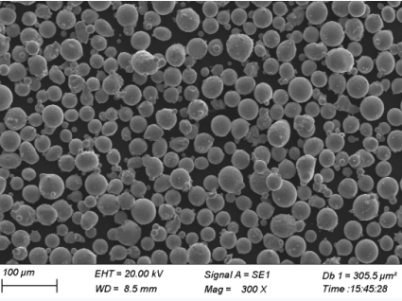
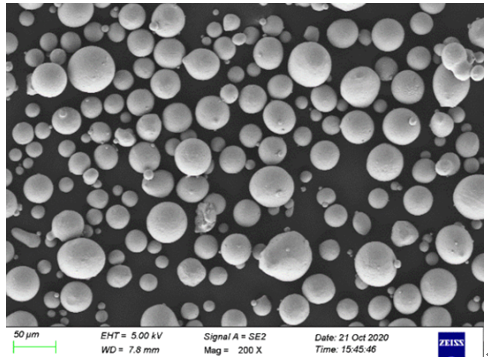
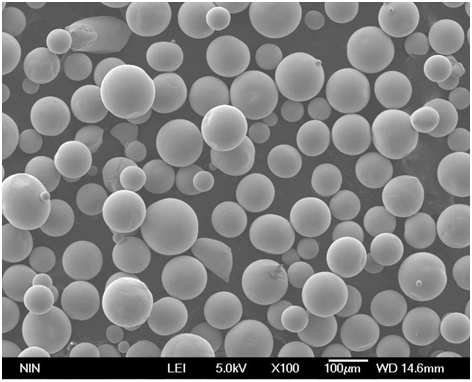

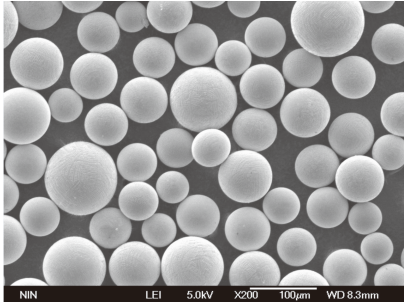
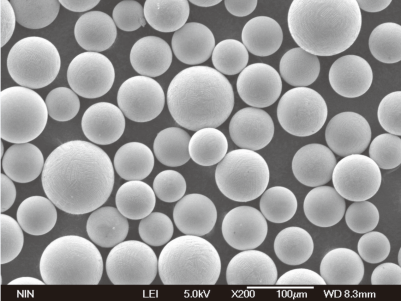
Cuadro comparativo de características
| Característica | Descripción | Ventajas | Limitaciones |
|---|---|---|---|
| Fuerza | Alta resistencia a la tracción | Adecuado para aplicaciones pesadas | Puede requerir tratamiento térmico |
| Dureza | Capacidad para soportar impactos | Ideal para componentes estructurales | Disminuye con un mayor contenido de carbono |
| Resistencia al desgaste | Resistencia a la abrasión | Prolonga la vida útil de los componentes | Puede requerir aleación con elementos más duros |
| Soldabilidad | Facilidad de soldadura | Simplifica la fabricación | Requiere tratamiento térmico antes y después de la soldadura |
| Relación coste-eficacia | Coste de material asequible | Reduce los costes generales de fabricación | Puede necesitar tratamiento adicional |
Ventajas de los aceros de baja aleación en polvo
El polvo de aceros de baja aleación ofrece varias ventajas que lo convierten en una opción atractiva para diversas industrias:
- Versatilidad: Adecuado para una amplia gama de aplicaciones, desde la automoción hasta la industria aeroespacial.
- Durabilidad: La mayor resistencia al desgaste y a la corrosión garantiza un rendimiento duradero.
- Personalización: La posibilidad de adaptar la composición permite obtener propiedades mecánicas específicas.
- Rentabilidad: Ofrece un equilibrio entre rendimiento y coste, lo que la convierte en una opción económica para los fabricantes.
Aplicaciones de los aceros de baja aleación en polvo
Los polvos de acero de baja aleación se utilizan en múltiples industrias debido a sus propiedades únicas. A continuación se detallan algunas de las aplicaciones más comunes.
| Industria | Solicitud | ¿Por qué acero de baja aleación? |
|---|---|---|
| Automotor | Engranajes, ejes, cigüeñales | Alta resistencia, resistencia a la fatiga |
| Aeroespacial | Componentes estructurales, tren de aterrizaje | Resistencia, ligereza |
| Petróleo y gas | Brocas, tuberías | Resistencia al desgaste, tenacidad |
| Defensa | Placas de blindaje, armamento | Alta resistencia, durabilidad |
| Construcción | Vigas estructurales, fijaciones | Soldabilidad, resistencia |
Usos específicos en la industria
| Industria | Uso específico | Ejemplo de modelo |
|---|---|---|
| Automotor | Cigüeñales | AISI 4340 |
| Aeroespacial | Tren de aterrizaje | AISI 4130 |
| Petróleo y gas | Brocas | AISI 8620 |
| Defensa | Placas de blindaje | AISI 5140 |
| Construcción | Vigas estructurales | AISI 6150 |
Especificaciones, tamaños, calidades y normas
Al seleccionar polvos de acero de baja aleación, es esencial tener en cuenta las especificaciones, tamaños, grados y normas aplicables a su caso de uso concreto. A continuación encontrará una tabla que resume estos aspectos.
| Grado | Especificación | Gama de tamaños (µm) | Normas |
|---|---|---|---|
| AISI 4130 | ASTM A829 | 10-100 | ASTM, ISO |
| AISI 4340 | AMS 6415 | 15-150 | AMS, ASTM |
| AISI 6150 | ASTM A231 | 20-200 | ASTM, ISO |
| AISI 8620 | AMS 6274 | 10-120 | AMS, SAE |
| AISI 5140 | ASTM A322 | 15-180 | ASTM, SAE |
| AISI 5120 | ASTM A29 | 10-100 | ASTM, SAE |
| AISI 50B44 | ASTM A331 | 20-160 | ASTM, SAE |
| AISI 5145 | ASTM A108 | 10-120 | ASTM, SAE |
| AISI 5160 | ASTM A689 | 15-150 | ASTM, SAE |
| AISI 52100 | AMS 6440 | 10-110 | AMS, SAE |
Proveedores y precios de Aceros de baja aleación Polvo
La información sobre precios y proveedores es crucial para los fabricantes que desean abastecerse de polvo de acero de baja aleación. A continuación se ofrece un resumen de algunos de los principales proveedores y precios indicativos.
| Proveedor | Ubicación | Modelo disponible | Precio por Kg (USD) |
|---|---|---|---|
| Höganäs AB | Suecia | AISI 4340, AISI 8620 | $15 – $25 |
| GKN Hoeganaes | EE.UU. | AISI 4130, AISI 6150 | $12 – $22 |
| Tecnología de materiales Sandvik | Suecia | AISI 5140, AISI 52100 | $18 – $30 |
| Tecnología Carpenter | EE.UU. | AISI 5120, AISI 5160 | $20 – $28 |
| Polvos metálicos de Río Tinto | Canadá | AISI 5145, AISI 50B44 | $14 – $26 |
Comparación de aceros de baja aleación en polvo
Elegir el polvo de acero de baja aleación adecuado puede ser todo un reto, sobre todo si se tienen en cuenta diversos factores como el coste, la disponibilidad y las propiedades específicas. A continuación encontrará una comparativa que le ayudará a tomar una decisión informada.
| Parámetro | AISI 4130 | AISI 4340 | AISI 8620 | AISI 5140 |
|---|---|---|---|---|
| Fuerza | Alta | Muy alta | Moderado | Alta |
| Dureza | Alta | Alta | Alta | Moderado |
| Resistencia al desgaste | Moderado | Alta | Moderado | Alta |
| Soldabilidad | Bien | Feria | Excelente | Bien |
| Coste | Moderado | Alta | Bajo | Moderado |

Ventajas y limitaciones de los aceros de baja aleación Polvo
Comprender las ventajas y limitaciones de los polvos de acero de baja aleación es esencial para seleccionar el material adecuado para su aplicación. A continuación encontrará una tabla que resume estos aspectos.
| Ventajas | Limitaciones |
|---|---|
| Alta resistencia: Proporciona una sólida integridad estructural. | Tratamiento térmico requerido: Puede necesitar tratamiento adicional. |
| Buena resistencia: Puede absorber altas energías sin fracturarse. | Coste: Algunas aleaciones pueden ser más caras. |
| Resistencia al desgaste: Prolonga la vida útil de los componentes. | Disponibilidad: La disponibilidad de determinados grados puede ser limitada. |
| Soldabilidad: Más fácil de fabricar y montar. | Complejidad: Requiere una selección cuidadosa en función de la aplicación. |
| Personalización: Puede adaptarse a necesidades específicas. | Procesando: Puede requerir un control preciso durante la fabricación. |
Preguntas más frecuentes
¿Para qué se utilizan los polvos de acero de baja aleación?
Los polvos de acero de baja aleación se utilizan en diversas aplicaciones, como componentes de automoción como engranajes y cigüeñales, estructuras aeroespaciales, equipos de petróleo y gas, materiales de defensa y elementos de construcción.
¿En qué se diferencian los aceros de baja aleación de los de alta aleación?
Los aceros de baja aleación contienen un porcentaje menor de elementos de aleación (normalmente menos del 8%) que los aceros de alta aleación, lo que los hace más rentables y fáciles de soldar, pero con menor resistencia a la corrosión.
¿Pueden soldarse fácilmente los aceros de baja aleación?
Sí, los aceros de baja aleación suelen tener una buena soldabilidad, especialmente en comparación con los aceros de alta aleación. Sin embargo, pueden ser necesarios tratamientos térmicos previos y posteriores a la soldadura para garantizar los mejores resultados.
¿Qué papel desempeña el cromo en los aceros de baja aleación?
El cromo mejora la dureza, la resistencia al desgaste y la resistencia a la corrosión de los aceros de baja aleación, por lo que es un elemento fundamental en la composición de muchos polvos de acero de baja aleación.
¿Dónde puedo comprar polvos de acero de baja aleación?
Los polvos de acero de baja aleación pueden comprarse a varios proveedores, como Höganäs AB, GKN Hoeganaes, Sandvik Materials Technology, Carpenter Technology y Rio Tinto Metal Powders. El precio varía en función del grado y del proveedor.

